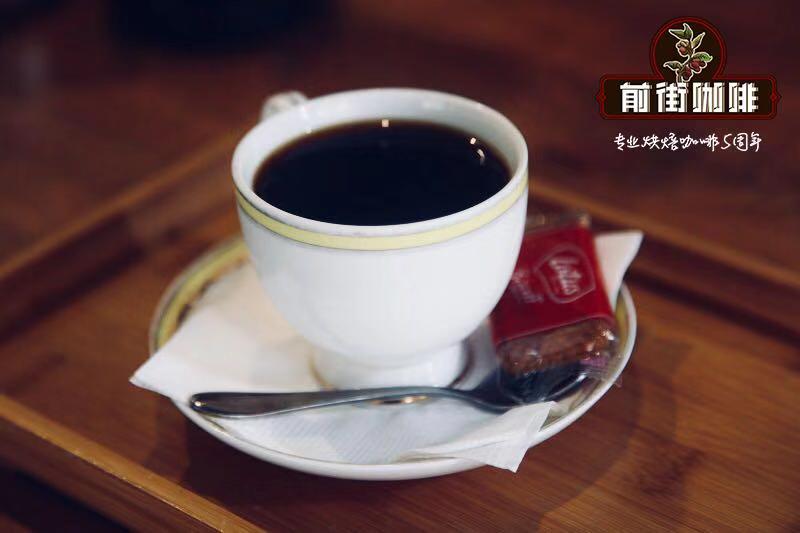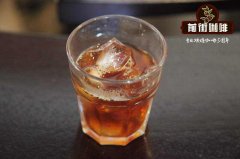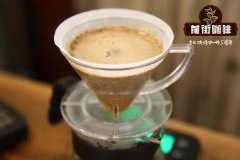Grade G1 of Sumatran honey treatment in the Burnamaria Highlands, Indonesia

Professional coffee knowledge exchange more coffee bean information please follow the coffee workshop (Wechat official account cafe_style)
Manning: it has a high alcohol thickness, moderate acidity and strong cocoa nut flavor. Suitable for deep baking, emitting a strong fragrance.
Wet planing mainly exists on the Indonesian island of Sumatra. Locally, coffee removes the peel and flesh, removes the gum, and dries when retaining the endocarp. Defective beans are prone to mechanical injuries due to high moisture content.
The fatal wound in the taste of Indonesian coffee is defective beans. However, in order to get more benefits, efficiency and cost savings, coffee farmers will pick the unripe or overripe fruits together and mix them together, resulting in immature or overripe beans mixed with the final raw beans, which is difficult to distinguish. If they are not picked out in time, it is easy to make the coffee cloudy and produce strong pungent flavors such as mildew, miscellaneous smell, strange smell and so on. These adverse factors will affect the quality and taste of coffee.
Bener Meriah micro-production areas always adhere to manual harvesting, that is, only picking mature coffee fruits to prevent coffee fruits with different maturity from picking at the same time. Frequent and detailed manual picking is often needed in the harvest period of coffee beans, and it takes as long as 4-5 months from the initial harvest to be fully harvested. Then centralized processing, grading, sub-packaging, transparent process. Strictly control the quality control and reduce the defect rate. The common processing method in Indonesia is the wet planing method. Due to the tedious treatment process and environmental problems, only a few processing plants can handle the sun and honey.
Honey treatment is that after the outer pulp of the coffee bean is removed, there will be a layer of sticky jelly. The traditional method of washing is to wash it off with clean water, but because of the limitation of water resources in some high-altitude areas, there is this way of direct drying. The honey treatment process is vulnerable to pollution and mildew, so it needs to be closely watched throughout the process, constantly turning, and speeding up drying, so as to avoid bad fermentation flavor. Its advantage is that it can best preserve the original sweet flavor of coffee ripe fruit, making the coffee show elegant black sugar flavor and drupe flavor, while the berry flavor also supports the basic aroma of red wine, which is considered to be a very elegant product. Mass production of honey treatment has been difficult to achieve, and the annual output of high-quality honey treatment is still very limited.
With regard to the beans that look like sour beans in the appearance of raw beans treated with Bomelia Highland Honey, Indonesia, the editor also suspected that there was something wrong with the quality of raw beans when they first received them. However, after several rounds of cup testing, it was found that the taste had little effect. It should be the processing method of honey treatment that causes some raw beans to look like sour beans.
Treatment of G1 with Sumatra honey in the highlands of Bonamaria, Indonesia
Region: Bernamuria Heights, Sumatra
Grade: G1
Treatment: honey treatment
Variety: Arabica
Harvest time: June-December
Soil: volcanic soil
Height: 1300-1500m
Temperature: 13-28 ℃
Rainfall: 1500-3000 mm/ year
Soil quality: pozzolanic soil
Cup test: BlackBerry, litchi, plum, black honey, raisins, cocoa grains
END
Important Notice :
前街咖啡 FrontStreet Coffee has moved to new addredd:
FrontStreet Coffee Address: 315,Donghua East Road,GuangZhou
Tel:020 38364473
- Prev

Peruvian Andes Gold Organic Coffee
Professional coffee knowledge exchange More coffee bean information Please pay attention to coffee workshop (Weixin Official Accounts cafe_style) Peru is located in the west of South America, with a coastline of 2254 kilometers. The Andes runs through the north and south, and the mountains account for one third of Peru's total area. The climate is dry and mild. Ninety-eight percent of Peruvian coffee is grown in the jungle at the foot of the Andes. Chassimayo in central Peru
- Next

Introduction to the flavor and taste of Ethiopian boutique coffee Yejia snow coffee song G1 sun-dried coffee producing area
For more information on coffee beans, please follow the Coffee Workshop (official account cafe_style of Wechat) about Ethiopia, the birthplace of coffee and the only place where indigenous people grow their own coffee. Coffee was first discovered by shepherds in Essekafa and its name evolved from Kaffa. Geographic Yega
Related
- Detailed explanation of Jadeite planting Land in Panamanian Jadeite Manor introduction to the grading system of Jadeite competitive bidding, Red bid, Green bid and Rose Summer
- Story of Coffee planting in Brenka region of Costa Rica Stonehenge Manor anaerobic heavy honey treatment of flavor mouth
- What's on the barrel of Blue Mountain Coffee beans?
- Can American coffee also pull flowers? How to use hot American style to pull out a good-looking pattern?
- Can you make a cold extract with coffee beans? What is the right proportion for cold-extracted coffee formula?
- Indonesian PWN Gold Mandrine Coffee Origin Features Flavor How to Chong? Mandolin coffee is American.
- A brief introduction to the flavor characteristics of Brazilian yellow bourbon coffee beans
- What is the effect of different water quality on the flavor of cold-extracted coffee? What kind of water is best for brewing coffee?
- Why do you think of Rose Summer whenever you mention Panamanian coffee?
- Introduction to the characteristics of authentic blue mountain coffee bean producing areas? What is the CIB Coffee Authority in Jamaica?

